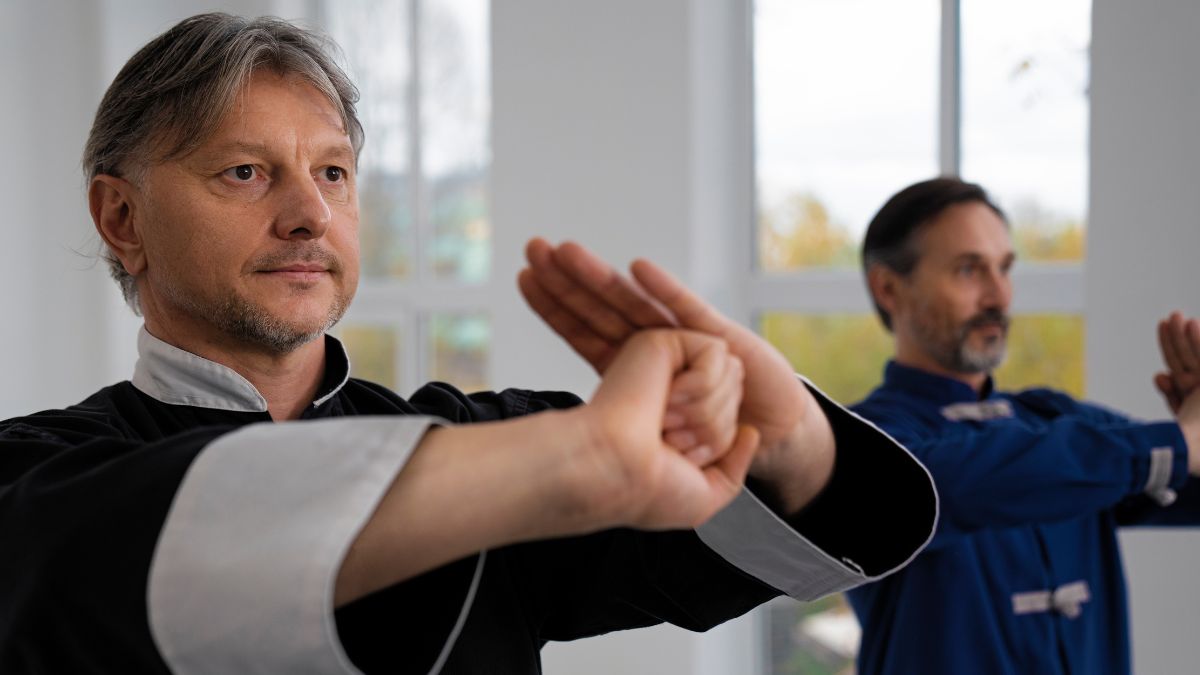Introduction
Tai Chi, a Chinese martial art and wellness practice, has evolved into a digital life through online classes that cater to diverse audiences worldwide. These lessons cater to various levels of mobility and flexibility, allowing individuals to practice Tai Chi at their own pace and revisit lessons as needed. This accessibility has broadened participation and allowed virtually anyone to reap the restorative benefits of Tai Chi. In today’s fast-paced society, people face challenges balancing career, family, and personal obligations, making holistic self-care challenging. Online wellness resources have removed many barriers, empowering individuals to incorporate mindful movement and meditative practices into daily living. With many platforms now providing Tai Chi lessons for seniors online and courses geared toward all levels and ages, this ancient healing practice has become easier and more inclusive than ever before. Tai Chi classes are now available on-demand, a significant shift in the wellness landscape. This move adapts to 21st-century demands while preserving traditional practices, allowing individuals to cultivate physical vitality and mental tranquility at their own pace. The popularity of Tai Chi is driven by its centuries-old legacy, scientific evidence supporting its health benefits, and the flexibility of digital access. The unique integration of physical exercise, mindfulness, and meditative calm has made Tai Chi a key player in contemporary wellness routines. Online Tai Chi classes enable people to build consistency in their wellness regimen and experience life-enhancing rewards.
Physical Health Benefits
Tai Chi is a practice that has been widely recognized for its numerous benefits, including improved balance and coordination, increased flexibility and strength, and enhanced cardiovascular health. It’s controlled movements and weight shifts train the body’s stabilizing muscles, improving proprioception and reducing the risk of falls in older adults. Tai Chi routines also promote joint mobility and muscle tone, making them suitable for those with arthritis, chronic pain, or physical limitations. The soft resistance provided by slow, deliberate movements gradually builds muscular endurance and flexibility, enabling practitioners to retain or regain functional mobility well into their senior years. Tai Chi also supports gentle cardiovascular conditioning, with its sustained movement and deep, rhythmic breathing enhancing blood circulation and supporting cardiovascular health without undue strain. Research from organizations like the American College of Sports Medicine emphasizes the value of incorporating Eastern mindfulness practices like Tai Chi into exercise routines, highlighting their unique ability to improve physical and mental wellness.
Mental and Emotional Health Benefits
Tai Chi is a unique form of exercise that promotes deep relaxation and stress relief through its mindful movement and controlled breathwork. It helps the body shift into a “rest and digest” mode, reducing the adverse effects of chronic stress hormones. Regular practice can lead to reduced anxiety, emotional stability, and better coping with life’s pressures. Tai Chi enhances mental clarity and focus by focusing on posture, mindful breathing, and sensory awareness. This practice helps practitioners become more productive, alert, and centered. Consistent Tai Chi practice cultivates emotional balance, making it easier to navigate life’s highs and lows with resilience. This holistic self-care is increasingly popular among younger and older generations, as people seek proactive, non-pharmaceutical methods to support emotional well-being. Millennials and young adults are turning to Tai Chi as a reliable tool to combat daily stress and anxiety.
Flexibility and Consistency
One of the primary appeals of online Tai Chi instruction lies in its unmatched flexibility. The ability to stream or download classes on-demand means individuals can craft a practice routine that aligns with their specific needs, whether that means a few peaceful minutes before work, a midday movement break, or a relaxing evening session. Online Tai Chi platforms offer a wide range of teaching styles, practice durations, and class progressions so that users can mix and match sessions that resonate with personal preferences or evolving goals. This convenience dispels common barriers—like lack of time, transportation, or access to specialty studios—and makes regular practice not just possible, but sustainable. Over time, these small, consistent efforts yield significant improvements in mobility, well-being, and overall quality of life.
- Convenience: Online classes allow participants to integrate Tai Chi into their daily schedules, no matter how busy life becomes.
- Variety: The diversity of online offerings allows users to try out different Tai Chi forms, class structures, durations, and teaching methods in one place.
- Consistency: Practicing regularly from home, free from logistical and scheduling hurdles, helps participants stay committed to their wellness journey.
Choosing the Right Online Tai Chi Class
Key Factors to Consider
- Instructor Credentials: It’s crucial to seek out experienced instructors with recognized qualifications and solid teaching backgrounds to ensure both safety and an authentic Tai Chi experience. A quality instructor can adapt lessons for all levels and provide clear, supportive feedback.
- Class Structure: Well-organized course content, gradual skill progression, and options for feedback or personalized support are indicators of a solid program that values student development.
- Community Engagement: Many reputable platforms offer access to forums or live interactions, enabling users to connect with instructors and fellow practitioners for advice, encouragement, and ongoing support.
It’s wise to read through student testimonials, participate in trial classes, and review course outlines to find a program that best suits your learning style, fitness level, and long-term wellness goals. The right fit ensures you’ll be motivated and supported throughout your Tai Chi journey.
Tips for an Effective Online Tai Chi Practice
- Set a Regular Schedule: Building a consistent practice is crucial. Dedicate a certain time of day—no matter how short the session—to help solidify the habit.
- Create a Dedicated Space: Choose a quiet, uncluttered area at home where you can move freely and focus without distractions.
- Listen to Your Body: Always move within your comfort zone. As with any mindful exercise, listen carefully to your body’s signals and y movements when necessary to avoid discomfort or strain.
- Stay Engaged: Enhance motivation by joining online communities or discussion groups related to your Tai Chi class. Sharing insights, challenges, and progress keeps you inspired and connected.
Conclusion
As modern routines become increasingly hectic, online Tai Chi classes offer an innovative solution that fuses ancient wisdom with the convenience of today’s technology. These classes are not only inclusive—welcoming people of all ages, abilities, and backgrounds—but also exceptionally effective at nurturing optimal health, inner calm, and emotional resilience. By embracing accessible, virtual Tai Chi resources, you are investing in a practice supporting the entire well-being spectrum. Regardless of where or when you choose to begin, Tai Chi offers an empowering path to a stronger body, a calmer mind, and a more mindful life—truly meeting the needs of today’s holistic approach to wellness.










